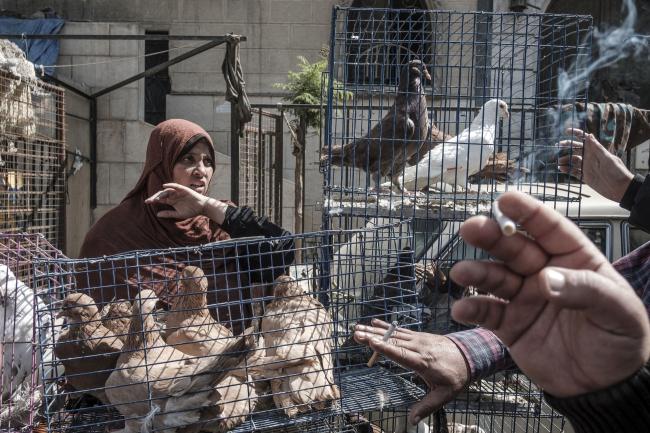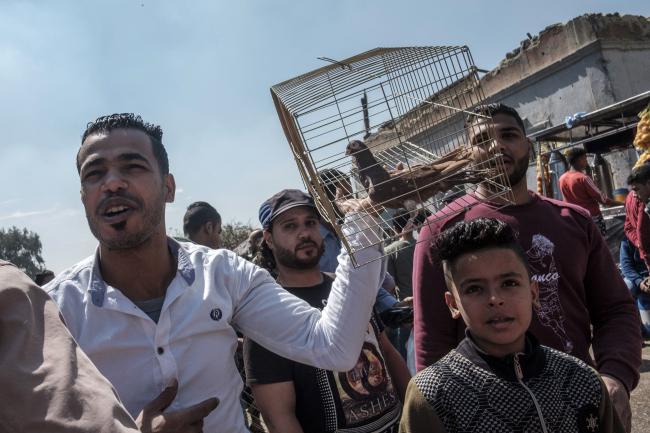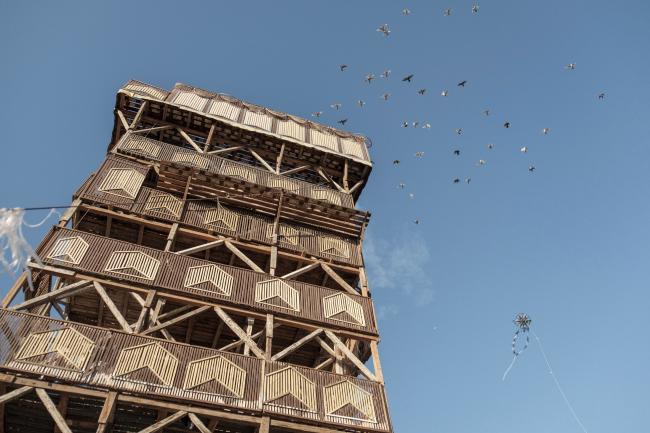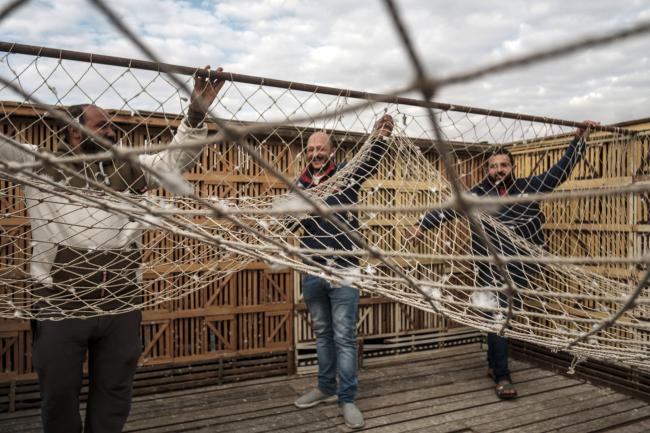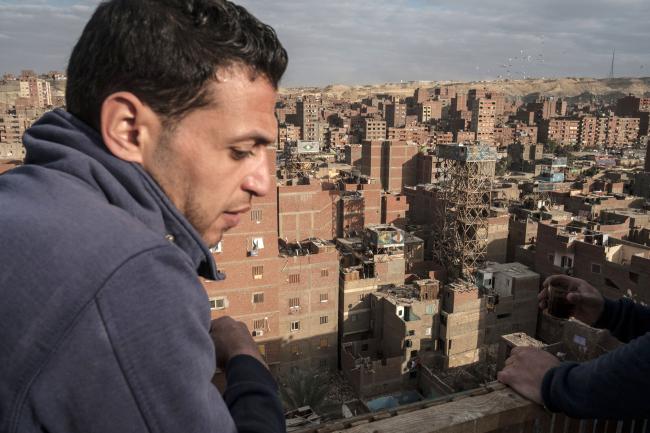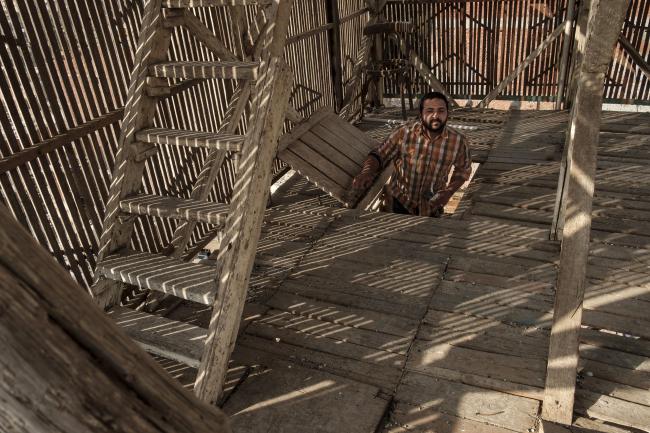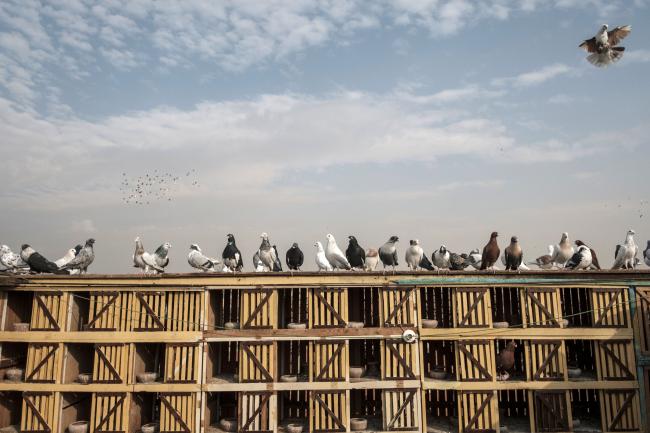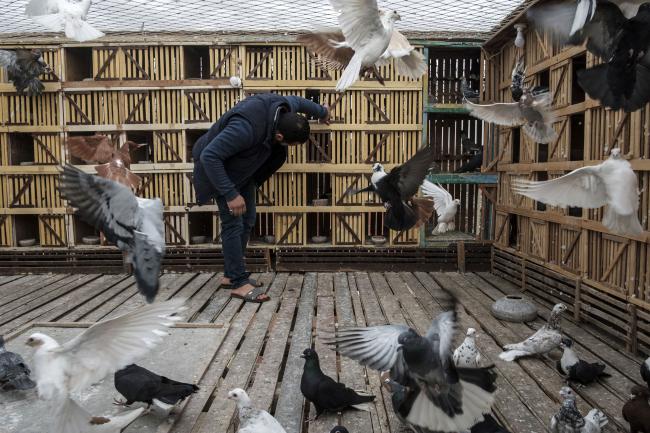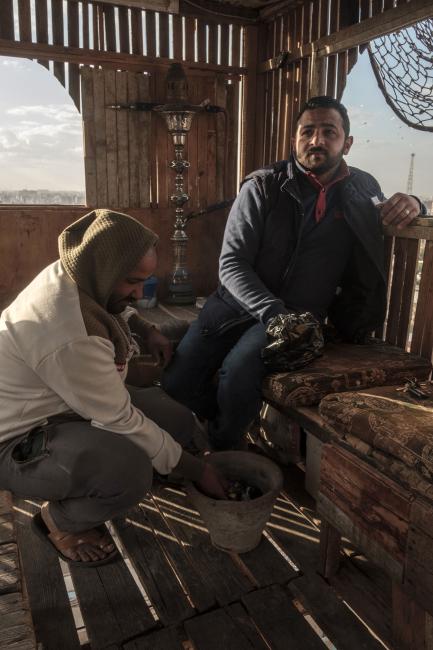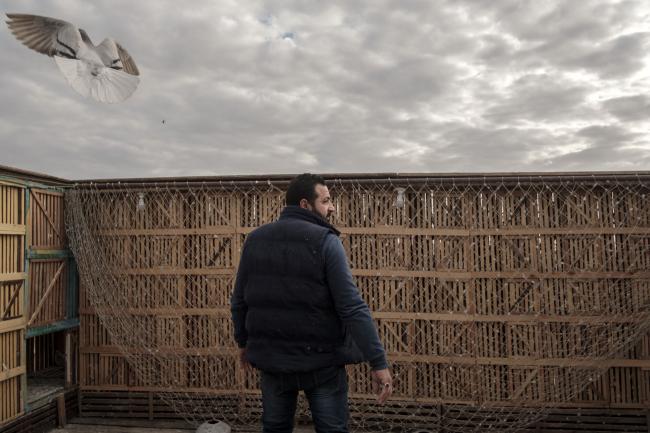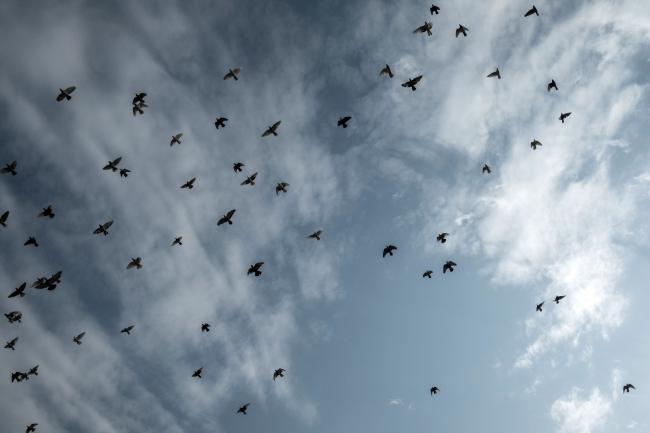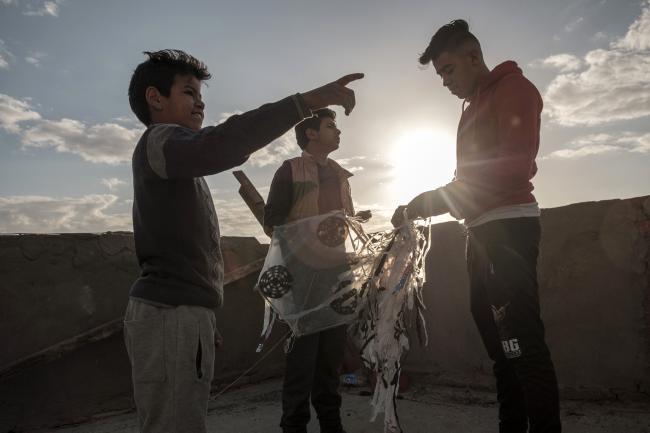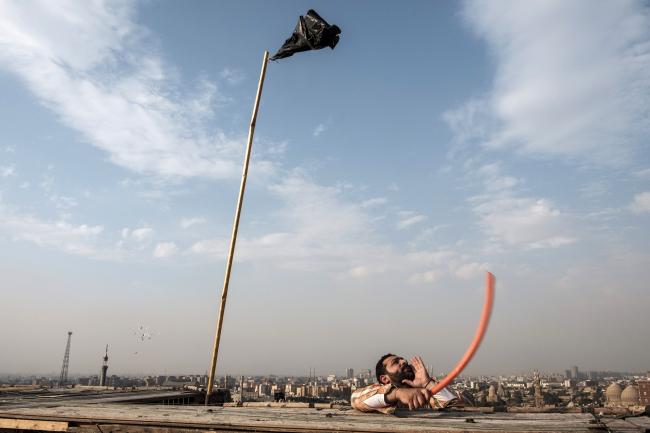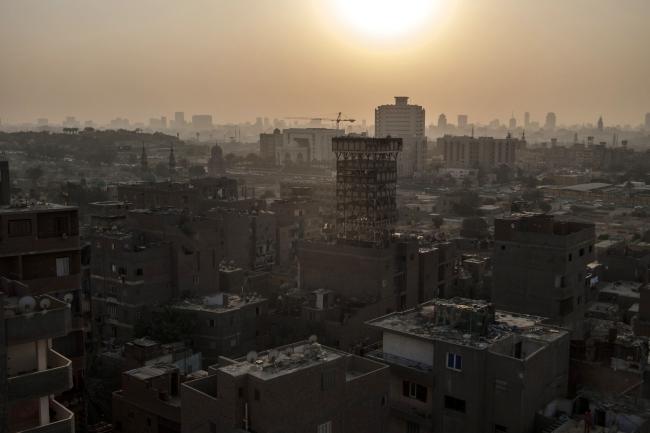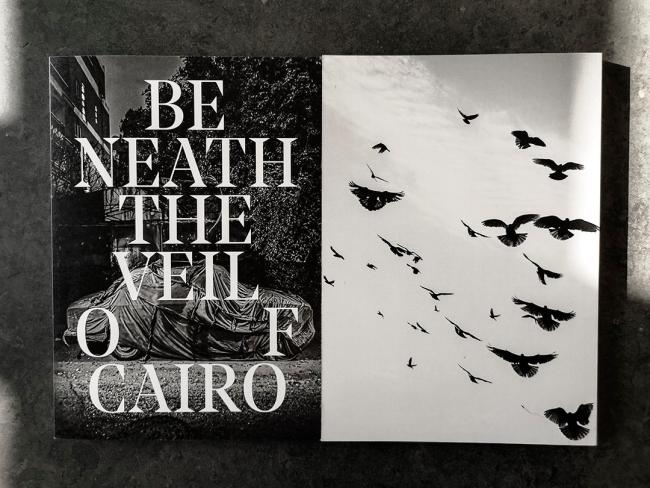Skip to main content
With lofts atop Cairo tenements, pigeon keepers let a passion for birds take flight, investing hard-won cash and vying for prizes. Mohamad and his friend spent every afternoon on the 14meter high tower watching and feeding pigeons. Mohamad keeps his children on his roof – around 400 of them. Each has a name that he sings smoothly to call them home. His hobby is not unusual in Egypt. From his pigeon loft — a spindly wooden column that looks like a medieval siege tower — a dozen similar structures can be seen that teeter above nearby tenements in east Cairo. There are thousands more across the country, many of which add 10 or 15 metres to the height of the buildings they perched on, each housing upwards of 100 pigeons. Other breeders inherit their flocks but he started his as an eight-year-old, when an uncle gave him two chicks to care for. He liked them for their loyalty, a characteristic that pigeon fanciers often cite, and began to buy more and more birds at pigeon markets across the capital.
He also trains them meticulously. Each young pigeon is first taught to live apart from its parents. Then it learns the layout of the loft. Finally, it is allowed to fly with some of the older pigeons which soar across the rooftops in the early evening for two or three hours. Mohamad teaches them to follow his whistles and signals – and those of his king pigeon, which leads the pack. It is no idle pursuit: Kouka wants his birds to be fit and disciplined so they can compete against other flocks in a local competition known as a Nash.
In one version of this competition, a pair of rival breeders release some of their birds from their opponent‘s loft. With their remaining pigeons, each breeder then tries to entrap members of their opponent‘s flock. The flock that returns home with the most pigeons wins the Nash – often some prize money is on offer too.
The centre of this world is to be found on a Friday at the weekly pigeon market in Cairo‘s City of the Dead. Cages filled with birds line a kilometre-long street that stretches deep into the capitals ancient cemeteries. Some of the pigeons are grey, some brown, others white. There are long necks and short necks, plumed tails and flat tails, drooping beaks and bulging ones too.
The humans here are also a mixed bag. Some are just breeders, with no interest in competing. Some are nash competitors who want a flock that can catch rival birds. Others want their pigeons to race in regulated contests over hundreds of miles.
The cheaper pigeons are for sale at the start of the street, for as little as £3. The pricier ones are further along, and the most expensive ones belong to 69-year-old Sayed al-Gazawa, who has bred pigeons for 55 years. The birds he bought back in the 60s cost the equivalent of 50 pence. Now Gazawa sells some
examples for more than £300.
BENEATH THE VEIL OF CAIRO
Publisher: University of Applied Sciences and Arts Dortmund — Faculty of Design
© 2020 Copyright
Text: Dirk Gebhardt, Lars Harmsen
Pictures: Dirk Gebhardt, (Lars Harmsen, Markus Lange, only for the printed book)
Copyediting: Dirk Gebhardt
Design: Lars Harmsen
Proof reading: William Aaron Horstmann-Craig
January 2020 Slanted Publishers, Karlsruhe, 2020
ISBN: 978-3-948440-05-3
SOLD OUT
